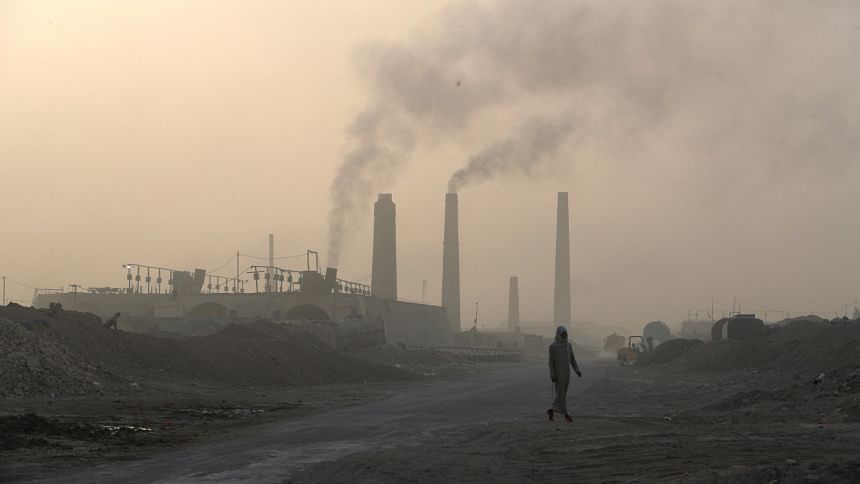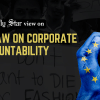Sustainability must equal financial viability

What is more important: being a successful, financially viable business, or being a sustainable business? We all want both, and in an ideal world, we would not have to choose between the two. But we live in a world where we all have to pay the bills, a world where there is no safety net for the vast majority of private companies. Over the past couple of years, I have watched many businesses go bust in the fashion and textile industry. In some cases, it has been due to financial mismanagement. In others, the market for their products simply shrunk or disappeared.
In others still, companies struggled to maintain financial viability while adhering to increasingly stringent demands around environmental and social issues. In all cases, such companies are quickly forgotten, and the world moves on. Nobody sees what happens behind the scenes, the sweat and tears, the long days and longer nights spent in attempts to keep things afloat.
I come back to my question: business viability or sustainability? While we would like both, the latter is of no use without the former. I think this is partly the problem our industry faces right now: there is a disconnect between what needs to be done from a sustainability perspective, and the cold, hard truth about how we pay the bills. For instance, the fashion industry as a whole is setting net zero targets for 2050, which are in line with international scientific consensus such as the Paris Agreement. These are great, and we are all onboard with them. As the saying goes, there is no business on a dead planet.
But what if the financial cost of meeting those goals makes suppliers unviable? I mention suppliers here as it is the suppliers who are being asked to do much of the heavy lifting on these issues. For the majority of fashion brands, most CO2 emissions occur in supply chains. Often, this is more than 90 percent. Thus, what is ostensibly viewed as a fashion industry problem is in many ways a supplier headache.
How do I, as a supplier, reduce CO2 emissions to support my customers in meeting their own targets? I can tell you that it comes at a significant financial outlay. It is also complicated. The power grid in Bangladesh has limited renewable energy output. The introduction of solar power is not cheap either, although it is a worthwhile investment.
But there are other demands from customers around sustainability. Compliance requests appear to be getting more stringent with each passing year. Factories have to be safer than ever before—and rightly so. More and more requests are made around how our wastewater is treated. Customers are making all manners of new, and different, compliance requests, all falling under the broad umbrella of sustainability. I would say these requests have increased by four- or fivefold over the last 10 years.
One thing has not changed, however. The prices we receive for clothing are not increasing. In real terms, taking inflation into account, they are decreasing.
What this means is we might be more sustainable as suppliers, but we are not necessarily viable as businesses—or we won't be if the industry continues down its current trajectory.
For years, we have heard that sustainability is an investment. Numerous surveys have claimed that sustainability equals business success. This might be the case in some industries, but it is certainly not in fashion supply chains.
Simply put, a more sustainable supplier is a supplier with higher costs. That means better production technologies, a better working environment, the use of better, more sustainable materials, better wages (social sustainability), and investment in renewable energy options. If we spend on those things while the prices remain the same, we will ultimately become unviable as business entities.
I wrote about Renewcell last week and in many cases, that is what we have seen. Renewcell did everything the right way. They created a product the fashion industry had been asking for. They used clean technologies and they also produced in Europe where renewable energy is in high use. They did all of these things and then tried to charge a price which equated with business viability. But the market did not accept it.
This is a problem, one I believe we will see more and more. In my mind, you must get financial viability right and then work backwards from there. If this means passing higher costs through supply chains, so be it. This is the bullet our industry needs to bite if crucial climate and environmental targets are to be met on time and within planetary boundaries. And to this end, brands, governments, manufacturers, and enterprises must work together with the suppliers.
Mostafiz Uddin is the managing director of Denim Expert Limited. He is also the founder and CEO of Bangladesh Denim Expo and Bangladesh Apparel Exchange (BAE).
Views expressed in this article are the author's own.
Follow The Daily Star Opinion on Facebook for the latest opinions, commentaries and analyses by experts and professionals. To contribute your article or letter to The Daily Star Opinion, see our guidelines for submission.

 For all latest news, follow The Daily Star's Google News channel.
For all latest news, follow The Daily Star's Google News channel. 










Comments